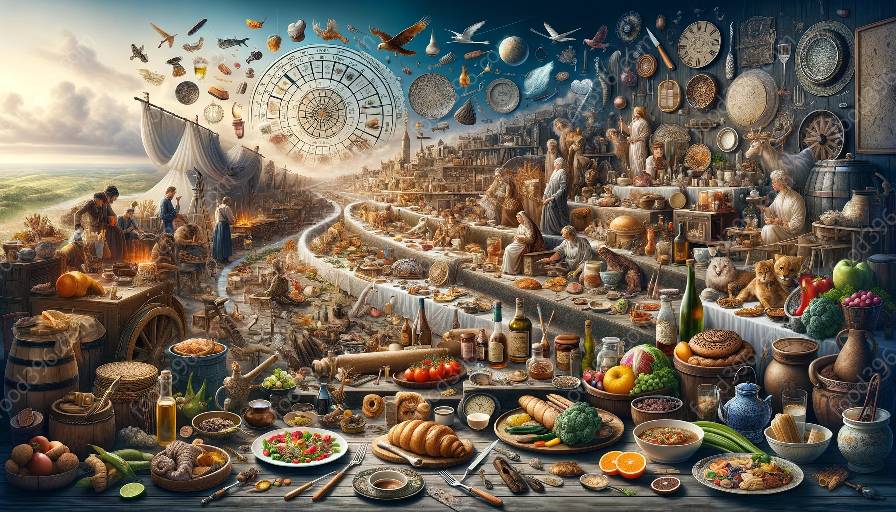When it comes to Mexican cuisine, the diverse flavors and vibrant colors have captured the hearts of food enthusiasts worldwide. The historical origins of famous Mexican dishes are deeply intertwined with the country's rich culinary heritage, which has been shaped by a myriad of cultural influences over centuries.
The Historical Origins of Mexican Cuisine
Mexican cuisine history dates back thousands of years, with influences from indigenous communities, Spanish colonists, and other global cultures. The ancient Mesoamerican civilizations such as the Aztecs, Maya, and Olmecs laid the foundation for many traditional Mexican dishes by cultivating a wide variety of ingredients like corn, beans, chili peppers, and cacao.
After the Spanish conquistadors arrived in the 16th century, they introduced new ingredients such as rice, pork, beef, and various herbs and spices to the region. This fusion of indigenous and European culinary traditions gave rise to the unique and flavorful Mexican cuisine that we know today.
Tacos: A Culinary Icon
Tacos, one of Mexico's most beloved culinary exports, have a fascinating historical origin that traces back to the indigenous people of the Valley of Mexico. The word 'taco' is derived from the Nahuatl language, spoken by the Aztecs, and the earliest tacos were filled with small fish and wrapped in tortillas made of maize.
Over time, tacos evolved to incorporate a wide array of fillings, from savory meats to fresh vegetables, reflecting the culinary diversity of the regions across Mexico. Today, tacos have become a global sensation, celebrated for their versatility and delicious flavors.
Mole Poblano: A Time-Honored Classic
Mole Poblano, a rich and complex sauce that is a staple of Mexican cuisine, has a history that intertwines indigenous, Spanish, and African influences. Legend has it that the nuns of the Santa Rosa convent in Puebla created the first mole poblano by blending indigenous chili peppers, spices, and nuts with Spanish ingredients like chocolate and almonds to honor a visiting archbishop.
Today, mole poblano is celebrated as a symbol of Mexican culinary tradition and is enjoyed in various forms, often served with poultry or enchiladas. The intricate blend of flavors in mole poblano reflects the diverse cultural heritage that shapes Mexican cuisine.
Ceviche: A Coastal Delicacy
Ceviche, a refreshing and zesty dish made by marinating raw fish or seafood in citrus juices, has its historical roots in the coastal regions of Mexico. The indigenous peoples of the coastal areas are believed to have preserved their catches of fresh fish by marinating them in a mixture of acidic fruit juices, a technique that later merged with Spanish culinary influences.
Today, ceviche is enjoyed as a popular appetizer or light meal, often served with crisp tostadas or tortilla chips. Its bright and tangy flavors evoke the coastal breezes of Mexico, making it a beloved dish with a rich historical legacy.
Pozole: An Ancient Hominy Stew
Pozole, a hearty and nourishing stew made with hominy and various meats, has a history that dates back to pre-Columbian times and holds significant cultural significance for the Mexican people. Originally prepared as a ceremonial dish by the Aztecs, pozole was often associated with religious rituals and special occasions.
Traditionally made with pork or chicken, pozole is seasoned with a blend of aromatic spices and garnished with an array of fresh toppings such as radishes, cilantro, and lime. This comforting and flavorsome stew continues to be cherished as a symbol of Mexico's ancient culinary traditions.
Tamales: Steamed Masa Delights
Tamales, a beloved staple of Mexican cuisine, have a history that stretches back to ancient Mesoamerican civilizations, where they were used as portable sustenance for warriors and travelers. Made from masa (ground corn dough) filled with a savory or sweet filling, tamales are wrapped in corn husks or banana leaves and steamed to perfection.
The filling for tamales can vary widely, encompassing everything from savory meats and salsas to sweet fruits and nuts. As a time-honored dish, tamales hold a special place in Mexican culinary heritage and are often enjoyed during festive occasions and celebrations.
Conclusion
The historical origins of famous Mexican dishes are a testament to the rich tapestry of cultural, culinary, and agricultural influences that have shaped Mexico's remarkable cuisine. From the ancient civilizations of Mesoamerica to the colonial encounters of the Spanish conquistadors and beyond, Mexican cuisine history is a vibrant tale of resilience, adaptation, and innovation.
By understanding the historical context of famous Mexican dishes, we gain a deeper appreciation for the flavors, traditions, and stories that make Mexican cuisine a true culinary treasure. As we savor each bite of tacos, mole poblano, ceviche, pozole, and tamales, we embark on a sensory journey that connects us to the diverse and enduring legacy of Mexican gastronomy.

